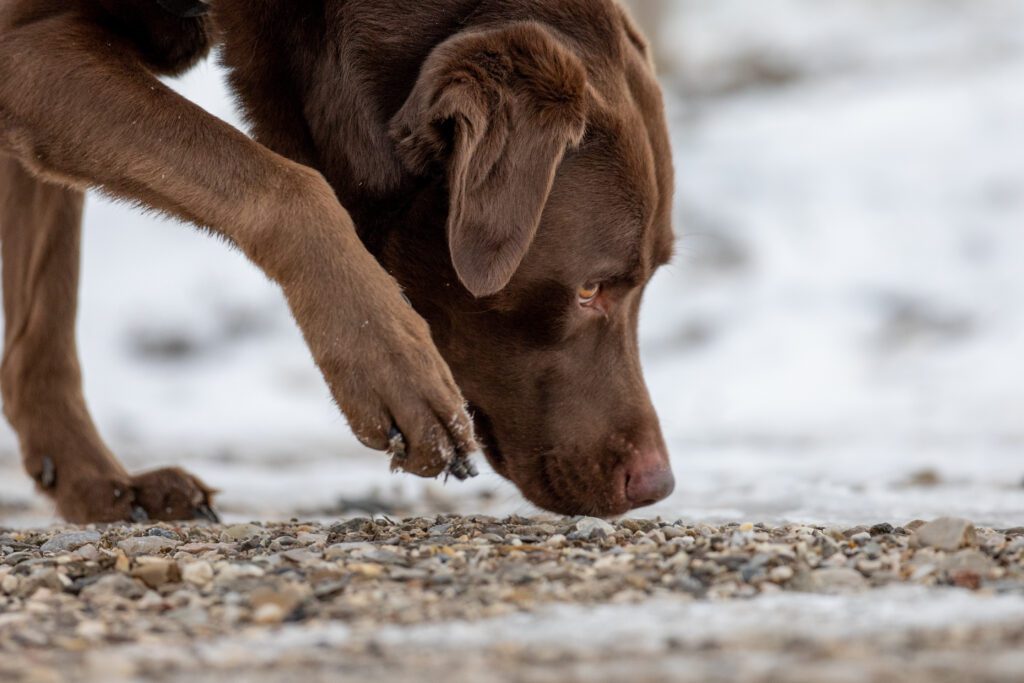Antifreeze Poisoning in Dogs: Prevention Tips and Symptoms to Watch for
Antifreeze poisoning in dogs is more common than you think. That’s why it’s important to know the signs of antifreeze poisoning so you can act quickly to seek prompt and potentially life-saving medical attention for your pet. Antifreeze, which is commonly used in vehicle maintenance, contains ethylene glycol, a substance that is highly toxic to dogs. Part of what makes antifreeze so dangerous is the fact that it has a sweet smell and taste, which can be appealing to dogs and other animals.
Our goal is to equip you with the knowledge to identify and respond to this serious threat. If you suspect that your dog has been exposed to antifreeze, contact the Animal Emergency Center of Tulsa right away at (918) 665-0508.

Stages and Symptoms of Antifreeze Poisoning in Dogs
Antifreeze poisoning occurs in several stages, which can be identified based on the symptoms taking place.
Stage 1: Early Signs and Symptoms
The initial stage of antifreeze poisoning is characterized by a range of symptoms that can manifest within the first 30 minutes of ingestion.
Lethargy: Dogs may appear unusually tired and unresponsive, which is one of the first signs of antifreeze poisoning.
Excessive Thirst and Urination: Affected dogs may exhibit increased thirst and urination. These symptoms, often associated with other conditions like diabetes, can arise very suddenly in cases of antifreeze poisoning.
Lack of Coordination: Depending on the severity of the poisoning, dogs may show signs of disorientation and unsteadiness, potentially leading to seizures.
Vomiting: Vomiting is a significant symptom of antifreeze ingestion. It can also lead to dehydration, which, if not addressed, can be life-threatening.
Stage 2: Escalation of Symptoms
As the poisoning progresses, symptoms may become more severe, indicating the increasing toxicity within the dog’s system.
Dehydration: Continuous vomiting and excessive urination can lead to severe dehydration, which can be fatal if it isn’t treated quickly.
Increased Heart Rate: As the body struggles to cope with the toxicity, the dog’s heart rate may increase significantly, which is a sign of distress.
Rapid Breathing: Dogs may pant excessively or show signs of labored breathing, indicating their body’s struggle against the poison.
Lessening of Symptoms: About 24 hours after ingestion, symptoms might appear to improve. This deceptive improvement is due to the progression of internal damage, and it should not be mistaken for recovery.
Stage 3: Critical Symptoms
In the final stage of antifreeze poisoning, the symptoms become grave and indicate severe organ damage.
Kidney Pain: Swollen kidneys, a result of ethylene glycol toxicity, can cause significant pain. Dogs might show signs of discomfort or aggression due to the pain.
No Urine Production: As the kidneys fail, urine production may cease, a sign of critical organ failure.
Coma and Potential Death: Severe seizures or a coma can occur in the last stages of poisoning, with a high risk of fatality.
If you observe any of these symptoms in your dog, especially after potential exposure to antifreeze, immediate veterinary intervention is essential. The first 30 minutes after antifreeze ingestion are crucial for the effective treatment of antifreeze poisoning. Even with temporary improvements in symptoms, you need to get your dog examined by a veterinarian as soon as possible.
Preventing Antifreeze Poisoning in Dogs
There are several helpful things you can do to protect your dog from antifreeze poisoning:
- Secure Storage: Always store antifreeze in a childproof container in a place your dog can’t reach.
- Immediate Clean-Up: Clean up any antifreeze spills immediately and thoroughly.
- Regular Vehicle Checks: Regularly inspect your vehicle for antifreeze leaks.
- Use Pet-Safe Products: Consider using antifreeze products that are formulated to be safer for pets.
- Educate Family Members: Ensure all family members, especially children, understand the dangers of antifreeze to pets.
- Monitor Your Dog: Keep a watchful eye on your dog, especially in areas where antifreeze is stored or used. If necessary, keep them out of the garage or area where antifreeze tends to be used.
Is it Antifreeze Poisoning, or Something Else? We Can Help
Remember, the symptoms of antifreeze poisoning can also indicate other health conditions or types of toxicity in dogs. Regardless of what might be causing your dog’s symptoms, seek treatment right away by calling the Animal Emergency Center of Tulsa at (918) 665-0508. We are committed to providing prompt, compassionate, life-saving care to pets in need. You are also more than welcome to call us if you need more information. Our team is here for you!
